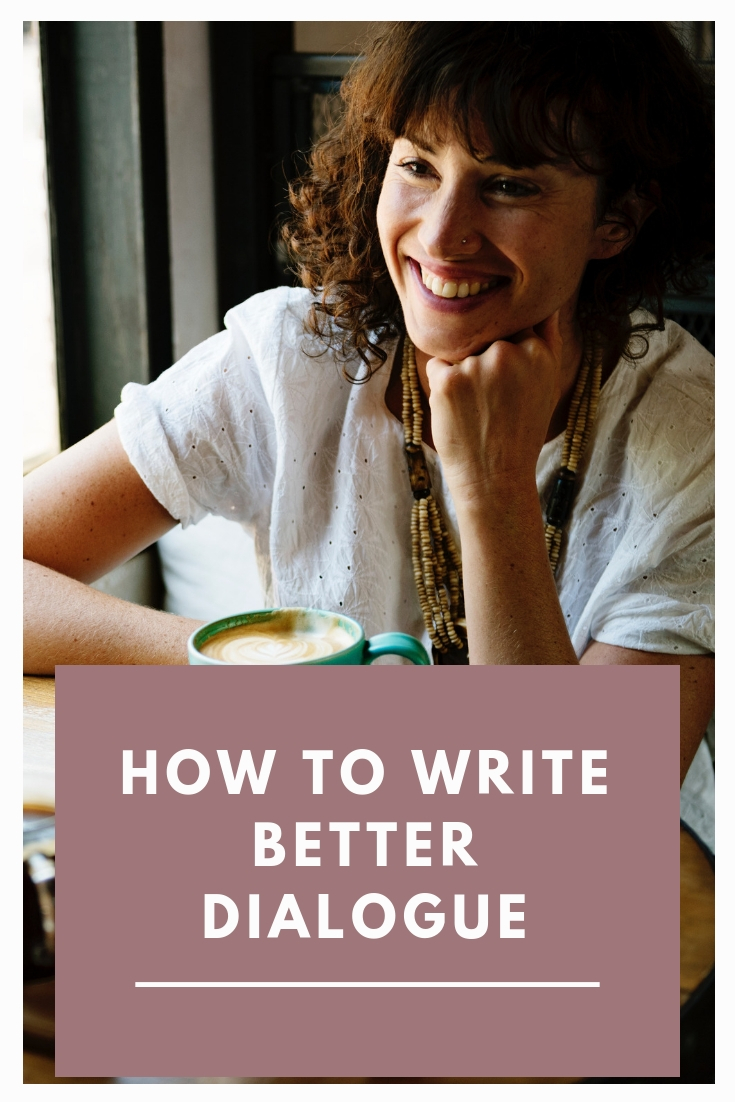
Hello, world!
When I read a book, I often find myself subconsciously entering writer-mode. I think, “My editor would never have let me put that in”, or “This word should be replaced by that word”, or “The pacing is so slow here!”. But amidst all of the other things I critique, I am a stickler for dialogue. A book can have fantastic pacing, beautiful descriptions, and memorable characters, but if the dialogue is poor, it will never win me.
The irony in this is that I have a lot of trouble writing my own dialogue. Making the words realistic while also memorable, while also giving each character individual flair, while maintaining pacing, while also not overusing dialogue – there’s a lot to remember, and it can be confusing, especially for those of us who are new to writing.
Today, I’m sharing some of my tips for writing better dialogue. Remember, though, that no tips can trump practice. A good rule in general is: to get better at something, do it often. You don’t need to do it well right away. That will come in time.
Let’s take a look at some badly written dialogue, as a few examples of what not to do.
Scene One:
“So, what did you do today?” inquired Jin.
“I woke up, and then went to the gym, and then had breakfast,” answered Lola.
“What did you eat for breakfast?” queried Jin.
“I had three pancakes with maple syrup and apple butter,” responded Lola.
“That sounds delicious!” exclaimed Jin.
“It was!” Lola cheered.
So, what’s wrong with this dialogue? The biggest problem is that it’s not interesting. I’ve seen lots of writers who like to be very descriptive, and that’s fine, but it doesn’t translate well to dialogue. Real people don’t list every minute detail of what they did or what they ate. No one cares about that.
Another problem with this scene, one that I see with beginning writers, is the dialogue tags. We’ve all heard that using “said” is taboo, but using a new adjective every time can be just as annoying. It’s okay to use “said”. Or (as my editor has told me many times), when only two characters are having a conversation, you can just drop the dialogue tags altogether after the first few exchanges.
Writing dialogue is not just about what the characters are saying. It’s also about how they say things, the ways they move, how they interact with each other. Descriptions help the reader to feel present in the scene. But this can turn awry very quickly. Let’s look at another example.
Scene Two:
“So, what did you do today?” asked Jin.
“Oh, not much,” said Lola. Her hair was dark, like waves of ink spilling over her shoulders. Her onyx eyes sparkled as she leaned closer to Jin, pearly white teeth flashing as she spoke. Her voice was like the beautiful music of violins. “I went to the gym and then came home. How about you?”
Jin shrugged his taut and muscular shoulders. “I didn’t do much either.” He gave a breathy and awkward laugh, a laugh that was like a train whistle.
Obviously, this scene is too descriptive, and it’s annoying to read. On top of that, it’s not active. A better way to emphasize dialogue is to describe what the characters are doing, not what they look like. A good writer can convey just as much from a character’s body language as their actual words.
Put yourself into the scene. Let’s say one of your characters is bored and wants to get out of the conversation. How would you act if that were you? Think of the body language you would use in this circumstance and the things you would say. Taking this, and all of the tips from before, into account, let’s look at a third example.
Scene Three:
“So, what did you do today?” asked Jin.
“Not much.” Lola sipped her coffee absently, her black eyes flickering to the door. “I went to the gym and then came home. Should we call for the check?”
“What did you do at the gym?” pressed Jin, ignoring Lola’s last remark.
Lola waved a hand absently. “Just weights. I’ve been working with weights lately.”
“That’s awesome.” Jin smiled eagerly. “I love lifting weights. You must be so good at that.”
“I guess. I don’t know.” Lola glanced at her watch. “Look, I have to get go-”
“I had a boring day, too,” Jin interrupted. He gave that false laugh of his, the one that sounded like a train whistle. Lola had always found it annoying. “I didn’t do much either.”
“Cool.” Lola turned towards the passing waiter. “Hey, can we have the check?”
This is a much better example of dialogue than the first two. It flows more smoothly, and the action conveys what the characters are thinking. From the exchange, we can tell that Lola is annoyed, and wants to get out of the conversation, and that Jin is ignoring these cues because he wants to keep the conversation going. With context and background information on the characters, as you would have in a story, this scene will be fleshed out.
As I said before, the best way to master dialogue is to practice. When you’re having your own conversations, take note of your body language, and that of the people you’re talking to. Then, try to translate this into a scene. With practice, you’ll be writing excellent dialogue in no time.
Best of luck!
-H.G.